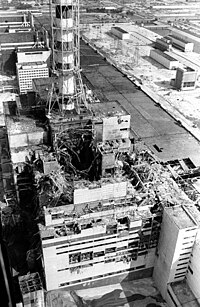
Photo from wikipedia
The reporting and analysis of population-based cancer statistics in the United States has traditionally been done for counties. However, counties are not ideal for analysis of cancer rates due to… Click to show full abstract
The reporting and analysis of population-based cancer statistics in the United States has traditionally been done for counties. However, counties are not ideal for analysis of cancer rates due to wide variation in population size, with larger counties having considerable socio-demographic variation within their borders and sparsely populated counties having less reliable estimates of cancer rates that are often suppressed due to confidentiality concerns. There is a need and an opportunity to utilize zone design procedures in the context of cancer surveillance to generate coherent, statistically stable geographic units that are more optimal for cancer reporting and analysis than counties. To achieve this goal, we sought to create areas within each U.S. state that are: 1) similar in population size and large enough to minimize rate suppression; 2) socio-demographically homogeneous; 3) compact; and 4) custom crafted to represent areas that are meaningful to cancer registries and stakeholders. The resulting geographic units reveal the heterogeneity of rates that are hidden when reported at the county-level while substantially reducing the need to suppress data. This effort will facilitate more meaningful comparative analysis of cancer rates for small geographic areas and will advance the understanding of cancer burden in the United States.
Journal Title: American journal of epidemiology
Year Published: 2022
Link to full text (if available)
Share on Social Media: Sign Up to like & get
recommendations!